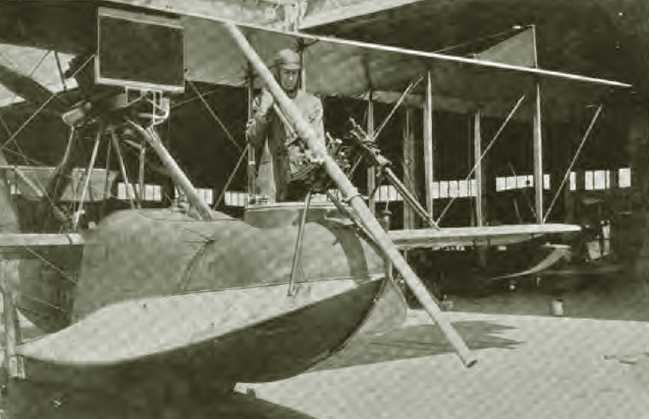This page is a collection of experimental and miscellaneous USA 3" (7.62 cm) guns, none of which were of much importance. As detailed information for these guns is limited, rather than creating a page for each one, I have decided to combine them into a single page.
This was a "mountain gun" issued to the Marine Corps. Weight was 205 lbs. (93 kg) with breech block. Fired a 13 lbs. (5.9 kg) shell. Range at 16 degrees was 4,000 yards (3,660 m) at a muzzle velocity of 1,000 fps. (305 mps).
This was a Davis recoilless gun for aircraft to use against submarines. The original design had two barrels aligned with their breech blocks adjacent, one firing a 3" (7.62 cm) shell forward and the other a charge of birdshot and vaseline to the rear. Weight excluding the breech block was 182 lbs. (82.6 kg) and chamber pressure was 15 tons/in2 (2,365 kg/cm2). A Lewis MG was used to "spot" for the Davis gun.
In later guns the birdshot charge was eliminated and instead the steel cartridge case itself was expelled to the rear, thus leaving the breech clear for the next round. Projectile weighed 9 lbs. (4.1 kg).
The design was similar to the 6-pdr Mark 12 Davis gun.
This was a lined down 7"/45 (17.8 cm) Mark 2 used for experimental purposes. Built in 1918-19, this bag gun was apparently inspired by the German long-range guns used during World War I and was a scaled-down version of the 9"/98 (22.9 cm) Mark 1. The chamber front slope of the US gun was divided into two cones to give a kind of parabolic shape. This form was believed to reduce erosion at the beginning of the bore by guiding the propellant gases into the bore in a direction approximately parallel to the axis of the bore. Rifling was uniform RH 1 in 45. With a 4-caliber projectile weighing 10.5 lbs. (5.0 kg), the following range results were obtained in 1922:
| Elevation | Average Barrel Pressure | Range |
|---|---|---|
| 10 degrees | 22.96 tons/in2 (3,620 kg/cm2) | 11,500 yards (10,520 m) |
| 17 degrees | 13,900 yards (12,710 m) | |
| 30 degrees | 18,000 yards (16,460 m) |
In 1923 a new test series was devised. Three different projectiles were used, all having the same body and overall weight of 10.25 lbs. (4.6 kg) but with ballistic caps of a conical shape giving them overall lengths of 4, 4.5 and 5 calibers. Four rounds of each projectile were fired using two different size charges, resulting in muzzle velocities between 4,547 and 4,800 fps (1,386 and 1,463 mps). The 4 and 4.5 caliber projectiles were found to be stable in flight, but the 5 caliber projectile tumbled.
"US Naval Weapons" by Norman Friedman
"A Treatise on Rifling of Guns" and "Notes on Gun Chambers, Projectile Bands and Accuracy Life of U.S. Naval Guns" both by Carl F. Jeansén
---
"Navy Ordnance Activities: World War, 1917-1918" by Navy Dept, United States, Bureau of Ordnance
---
Special help from Leo Fischer
16 May 2017 - Benchmark
19 November 2024 - Converted to HTML 5 format


